Jennifer West,Future Forgetting
Opening Reception: Friday, February 28, 2020. 6 – 9pm
February 28 – August 16, 2020
Organized by David Matorin
Public Program: Sunday, April 19, 4pm
Online conversation with artist Jennifer West and special guest, writer Norman Klein moderated by curator and writer Lauren Mackler. Watch a recording of the conversation here.
JOAN Los Angeles is pleased to present Future Forgetting, a solo exhibition of new film and sculptural works by Jennifer West. In this homecoming exhibition–the artist’s first solo show for more than 8 years in her native L.A.–West turns her lens on the city itself, bringing her ongoing exploration of the materiality of film to bear on matters of memory, place, and preservation. The exhibition is comprised of two major “analogital” works (West’s term for her hybrid video-films), and an ancillary Zine of the type West has created for all her solo exhibitions, documenting the thoughts and process surrounding the work. Future Forgetting’s zine is not confined to the printed page but takes form as a sculptural display of text, images and objects.
Each piece of Future Forgetting draws inspiration and figurative or literal material from the Los Angeles River–the often dry, concrete-encased waterway that curls through the notoriously heterogeneous quarters of the city in a circuitous comma, connecting the disparate parts of L.A. like independent clauses of a sentence. The show’s title is inspired by the epilogue of novelist and urban historian Norman Klein’s influential text “The History of Forgetting” (1997), in which he describes the “erasure of memory” that repeats itself in the constructed mythology and physical infrastructure of Los Angeles, as well as the deceptive veneer of downtown L.A.’s urban renewal. Future Forgetting uses the physical texture of film to describe Los Angeles as both a place and an image at once–an unstable construction that erodes and replenishes with time’s ebb and flow.
The large video projection, 6th Street Bridge Film (2020) is a transfer of intentionally damaged, discolored, tinted, dyed, and etched 16mm film. The footage documents the last days of the 6th Street Viaduct–the iconic L.A. river-spanning bridge that included an access tunnel which allowed motorists and film crews (permitted or otherwise) to drive from the street onto the river’s concrete embankments. Its downtown location is famous for its long list of cameos in Hollywood films such as “Point Blank” (1967), “Grease” (1978), “Repo Man” (1984) and “Terminator 2” (1991). The viaduct was demolished in 2016 for concerns over its structural integrity despite obtaining an L.A. Historic-Cultural Monument designation. The city is replacing the bridge with a new design set to open in 2022. In West’s film, a cross-section of Angelenos assembles to commemorate the bridge’s passing. Film and car enthusiasts, graffiti writers, photographers, and urban explorers drive, walk, and linger upon the bridge’s expanse and the river below for the last time. In 2019, West re-entered the riverbed below the viaduct’s former location with the film she’d shot three years prior. Unspooling the developed rolls, she submerged her reels into the river’s water, dragging them through the algae, sediment and detritus picked up on the river’s journey through the city. The treatment destroyed her original film prints but she preserved them, along with the river’s imprint on their surface, on 16mm negative stock. The surface discoloration and decomposition seen in the film’s 4K video transfer are the results of this process–using the river as a treatment for its own image.
The second major work originates further upriver at the Arroyo Seco Confluence in South Pasadena. For years during walks near her home, West had observed a preponderance of shattered TVs in Arroyo Seco’s seasonally dry riverbed. Apparently thrown from surrounding bridges to the cement below, the perplexing gesture seemed born partly of careless disregard and partly of destructive malice, but she imagined how it could be a kind of silent protest against consumer society, planned obsolescence or the tyranny of images. The cinematic, apocalyptic image of L.A.’s barren river littered with cast-off electronics inspired her to preserve the evidence of these futile acts of violence against disposable technology. She began collecting the splintered fragments of circuit board or mirrored and translucent screen intermingled with other flotsam and jetsam that had washed downriver–old CDs and stereo pieces; electric organ keys and torn audio speakers; broken golf clubs from the Arroyo Seco Golf Course, and stray arrows from Pasadena Roving Archers. West arranged the random sampling of scavenged debris by type and filmed it in 16mm on green screen backgrounds. The filming’s irreverent style echoes the miscellany of the dredged collection. The artist’s cat is glimpsed walking in and out of frame, occasionally settling in the center, indifferent to the film production in process. During the film’s telecine transfer, a loose electrical cable caused the background screen to flash from green to magenta. West includes this glitching footage in a further embrace of indeterminacy and accident. The resulting work, Archaeology of Smashed Flatscreen Televisions Thrown off Bridges (2020), is an installation of flatscreen monitors facing upward from the floor, each showing a different section of her collected things. West displays her collection on top of each monitor’s screen, doubling the fragmented objects with their immaterial likeness in 16mm below. The taxonomic display is like an archeological case study of L.A.’s physical evidence–artifacts of our moment seen from some future time when our ecologically inevitable fate has already taken place.
Jennifer West is an artist who has explored materialism in film for over ten years. Born in Topanga, California, West lives and works in Los Angeles. She received an MFA from Art Center College of Design in Pasadena, California, and a BA with film and video emphasis from the Evergreen State College in Olympia, Washington. She has lectured widely on her ideas of the “Analogital” and is an Associate Professor of the Practice of Fine Arts at USC’s Roski School of Art and Design. Her writing has appeared in Artforum, Frieze and Mousse Magazine. West has produced eleven Zine artist books which were recently acquired by the Getty Museum. Her work is in museum and public collections such as and the Yuz Museum, Shanghai, China; Museum of Contemporary Art, Cleveland; Hammer Museum, Los Angeles; Kadist Foundation (San Francisco/Paris), Zabludowicz Collection (London); Los Angeles County Museum of Art; Depart Foundation (Rome); Museum of Old and New Art, Tasmania; Henry Art Gallery (Seattle); Rubell Collection (Florida); Saatchi Collection (London), among others. Significant commissions include Seattle Art Museum, Seattle, 2016-2017; Institute of Contemporary Arts, Art Night, London, 2016; High Line Art, New York, 2012; Aspen Art Museum, Aspen, 2010; and Turbine Hall at TATE Modern, London, 2009. Her solo exhibitions include: “Emoji Piss Film”, Contemporary Art Museum, St Louis, 2018; “ Is Film Over?, Yuz Museum, Shanghai, China (2017); “Film is Dead…”, Seattle Art Museum, Seattle, 2017; “Action Movies, Painted Films and History Collage”, Museo d’Arte Provincia di Nuoro, Nuoro, 2017; “Flashlights Filmstrips Projections”, Tramway, Glasgow, 2016; “Aloe Vera and Butter, S1 Artspace, Sheffield, UK (2012); “Paintballs and Pickle Juice”, Kunstverein Nürnberg, Nuremberg, (2010); “Perspectives 171: Jennifer West”, Contemporary Arts Museum, Houston, (2010); Lemon Juice and Lithium, Transmission Gallery, Glasgow (2008); “White Room: Jennifer West”, White Columns, New York, (2007).
Conversation between Norman Klein, Lauren Mackler, & Jennifer West
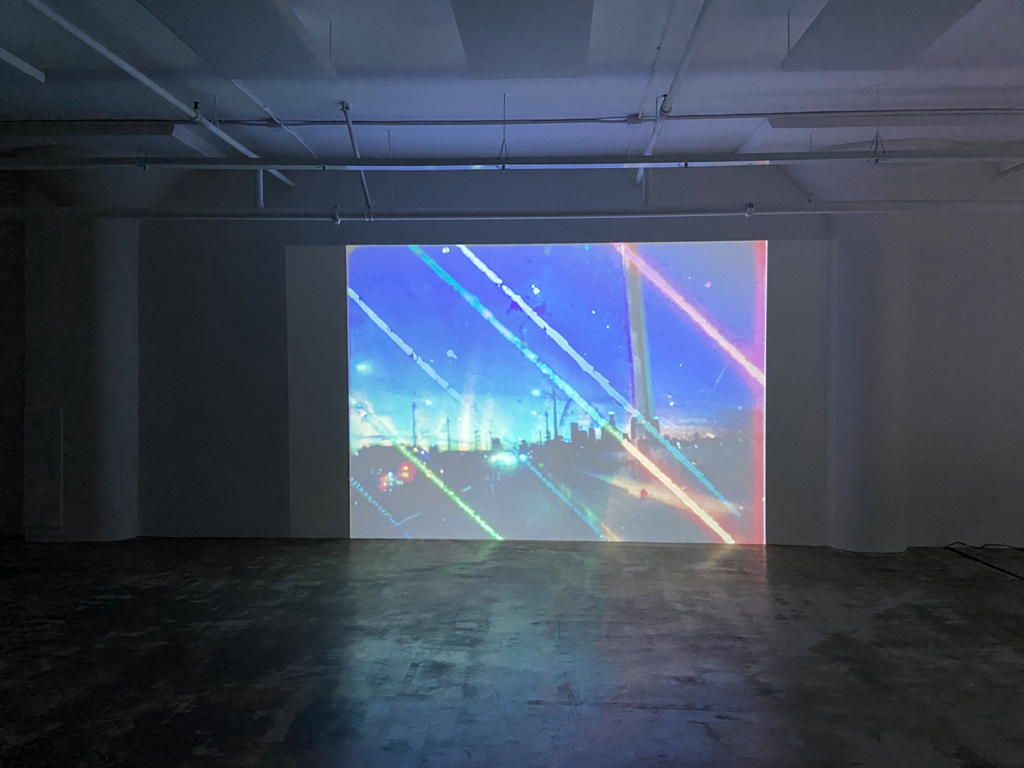
Jennifer West, Future Forgetting installation view
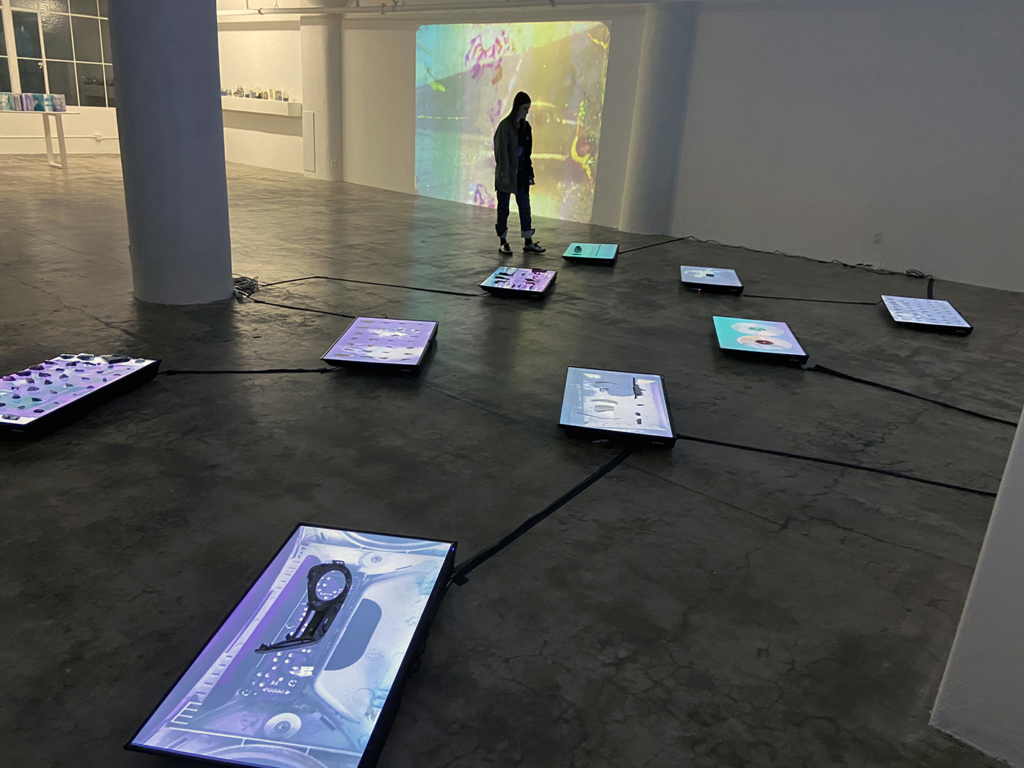
Installation view: Jennifer West, Archaeology of Smashed Flatscreen Televisions Thrown off Bridges, 2020. 9-channel flatscreen television installation (16mm film print transferred to 2K, shot on Arriflex S1 by Peter West), found objects
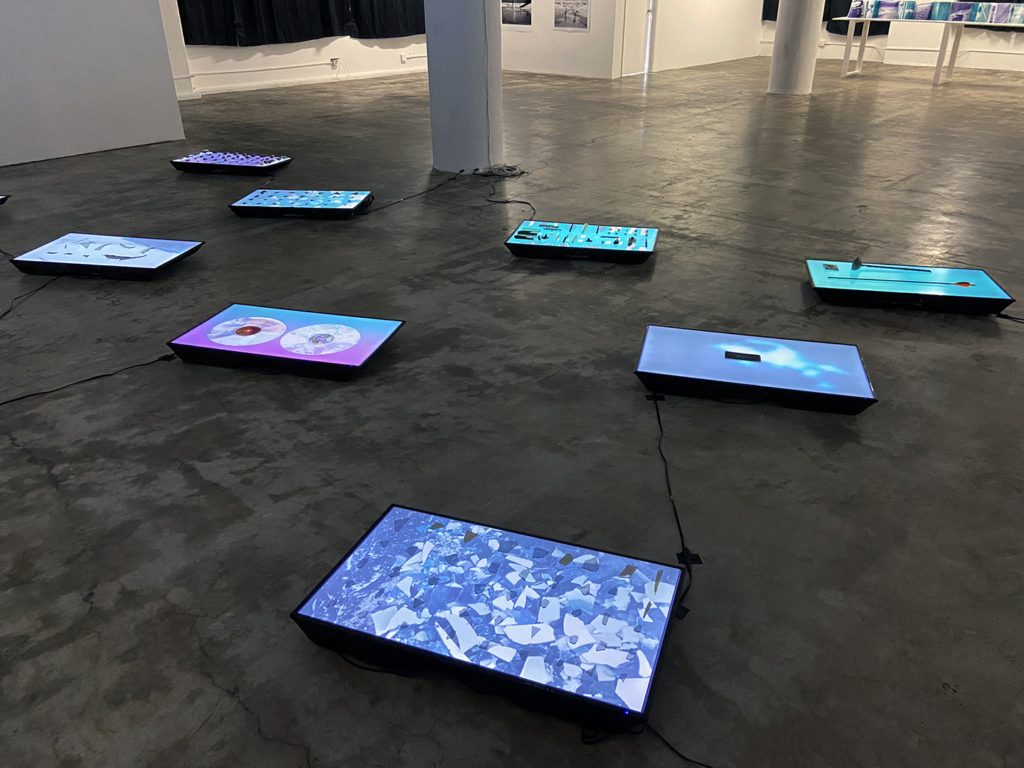
Installation view: Jennifer West, Archaeology of Smashed Flatscreen Televisions Thrown off Bridges, 2020. 9-channel flatscreen television installation (16mm film print transferred to 2K, shot on Arriflex S1 by Peter West), found objects
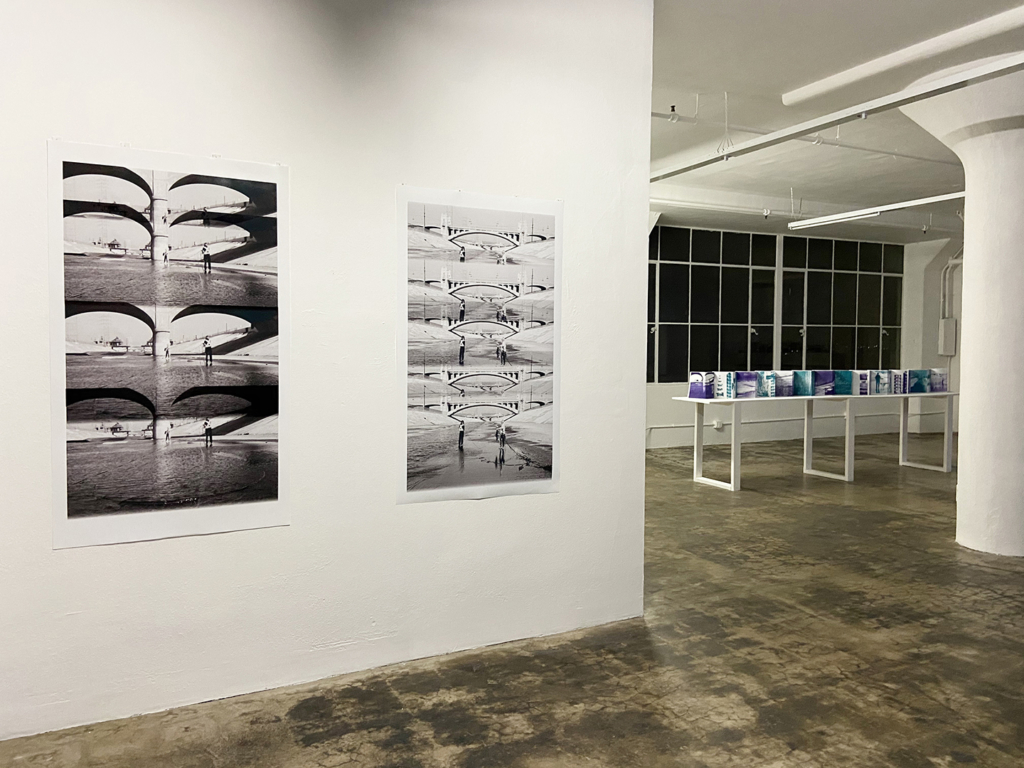
Jennifer West, Future Forgetting installation view

Installation view: Jennifer West/Hand-blown glass by Becca Chernow – River Water Processing Glass Jars 1-12, 2020. Los Angeles River Water, Found Objects, Archival Pigment Prints, 16mm Film Print, Variable dimensions
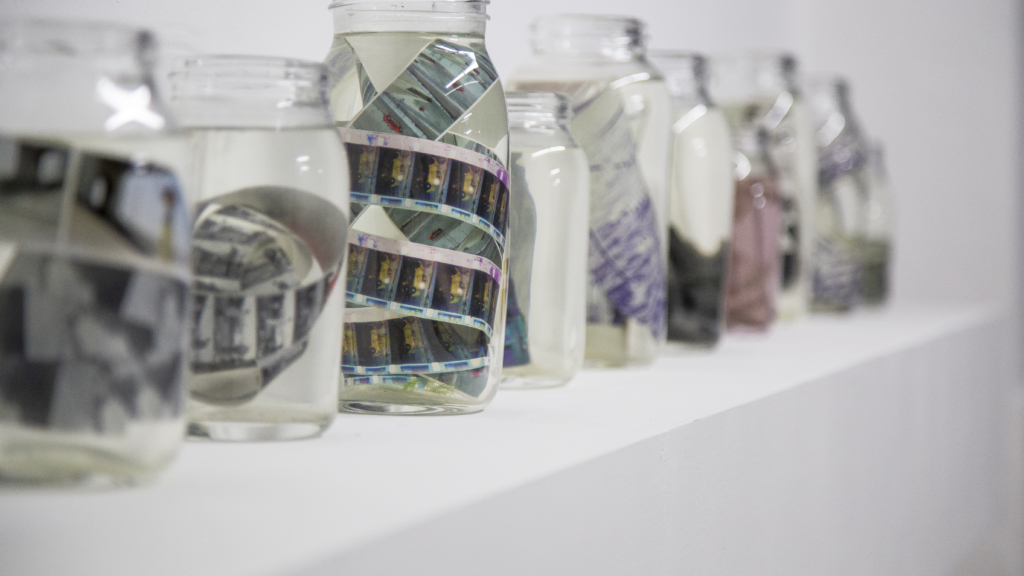
Installation view: Jennifer West/Hand-blown glass by Becca Chernow – River Water Processing Glass Jars 1-12, 2020. Los Angeles River Water, Found Objects, Archival Pigment Prints, 16mm Film Print, Variable dimensions

0